Why Does My TV Take So Long to Turn On? Samsung, LG, Sony & TCL
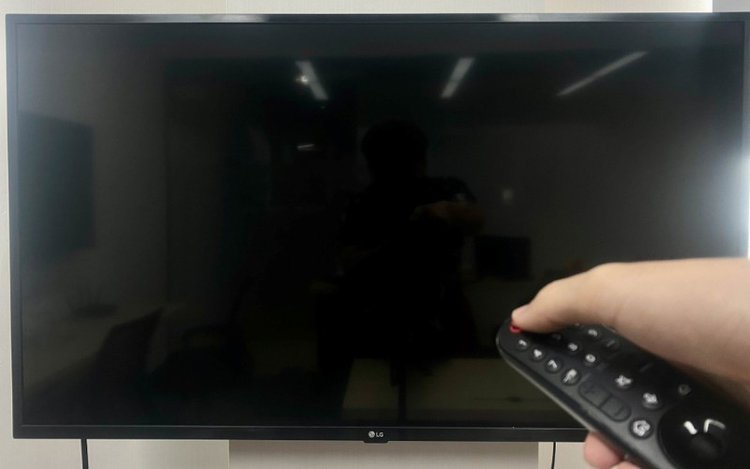
What To Know
- Modern smart TVs may experience delays in power-up due to full memory caches or power supply board issues.
- Users can improve TV boot-up times by clearing cache, deleting unused apps, or enabling features like “Quick Start+” on certain models.
- If the TV consistently takes an extended time to turn on, it might indicate a more serious hardware issue requiring expert intervention.
Despite today’s smart TVs boasting impressive speed and capabilities, factors like model, age, and internal issues can delay TV boot-up.
Dive in to uncover the reasons and their solutions.
Quick Navigation
Reasons Why Your TV Takes So Long to Turn On
A TV usually takes a few seconds to turn on after you press the power button. If it takes longer than usual, the TV’s memory cache could be full, or there may be a problem with the device’s power supply board.
Fortunately, there are fixes to the probable cause factors. Below we’ll discuss all possible reasons your TV could take too long to turn on and the solutions.
1. Memory Cache is Full
Like your smartphone and computer, your TV uses memory too, when on. Memory consumption increases if multiple apps are installed on your smart TV.
And when the memory is fully consumed or close, the TV performance will take a hit. Switching between apps will take more time than usual.
The interface will take a second or two more to respond to remote commands, and apps shall crash more frequently than average. Another fallout is the TV taking a few extra seconds to turn itself on after you press its power button.
Luckily, there are fixes to the problems.
Clear cache. You can clear the cache of apps individually or all cache files simultaneously.
Here are the steps to clear an individual app’s cache on a Google TV (Sony or TCL TVs):
1. Access the TV’s Settings app.
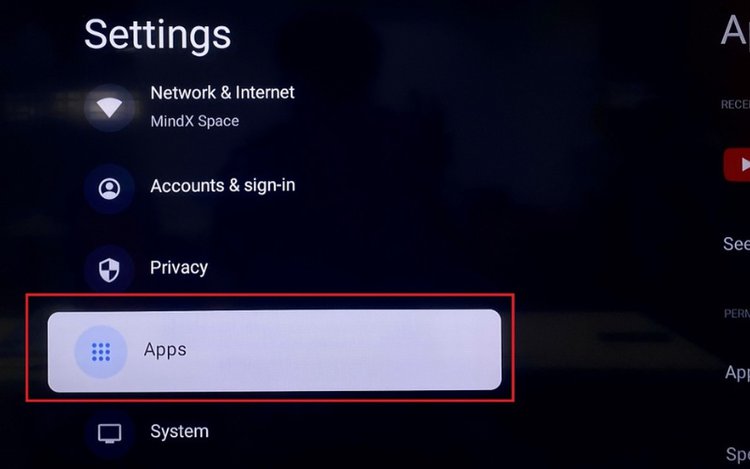
2. Select Apps and then See all apps.
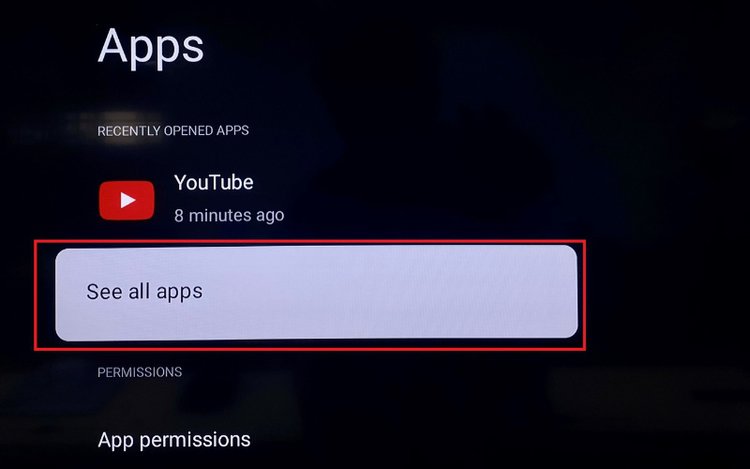
3. Choose the app whose cache you want to clear.
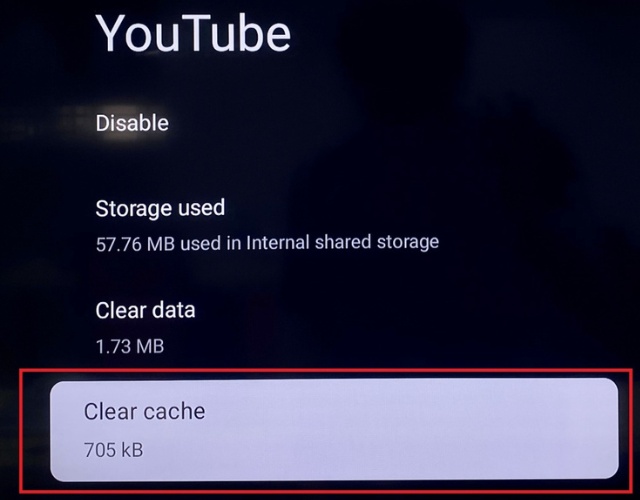
4. Navigate to and select the Clear cache option. Select OK to complete the process.
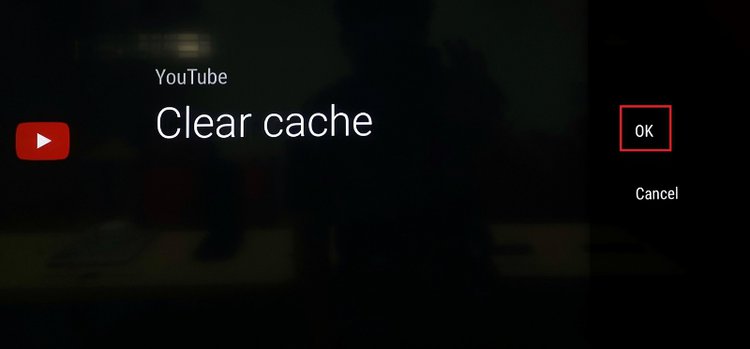
You can do this for each app individually, especially the ones used frequently. After the cache is cleared, the TV’s workload will decrease, and its performance will improve.
You can also clear the TV cache by performing a “cold boot.”
If you own a Samsung TV, here are the instructions to cold-boot the device and remove the cache.
Follow these steps if using the remote:
1. Turn on the TV. Press and hold the TV remote’s power button.
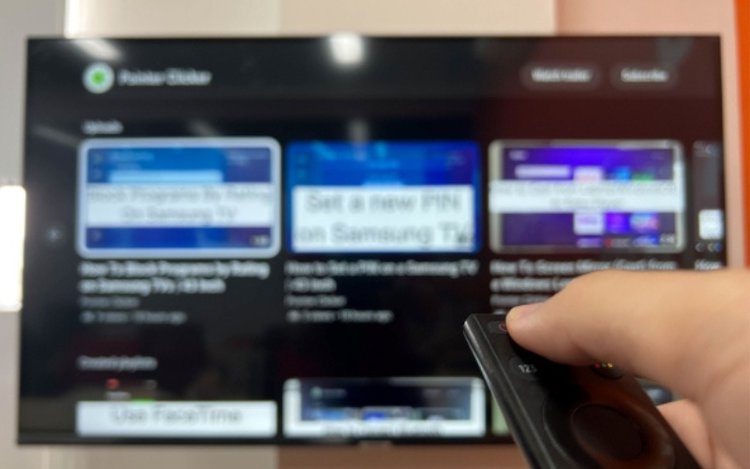
2. Continue pressing the power button as the TV turns off and switches back on.
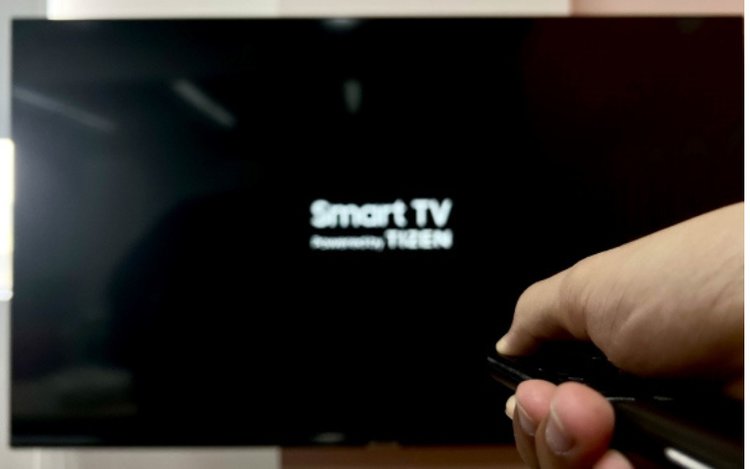
Congratulations, you just performed a cold boot and cleared the cache! The performance hiccups caused by memory overload should no longer be present.
You can also perform the cold boot without the remote. Here is how:
1. Turn on the TV. Unplug the TV cold turkey.
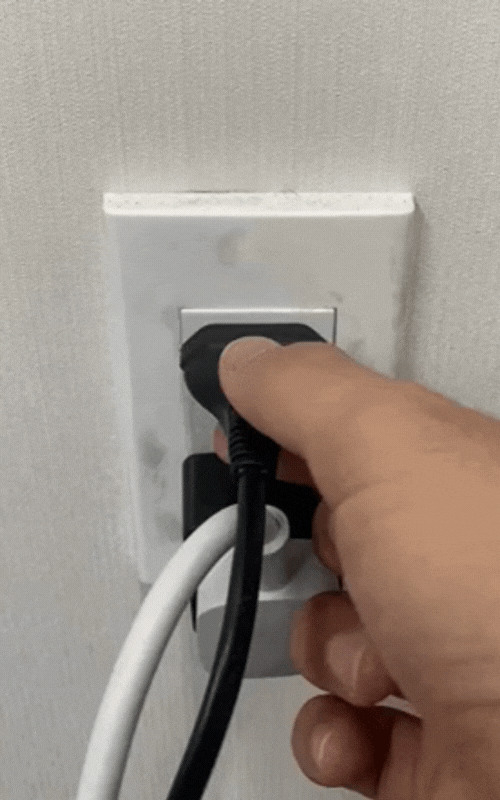
2. Wait 30 seconds. Insert the cord back into the TV’s power outlet and turn on the device.
Abruptly disrupting the TV’s power supply discharges the TV (dissipating any accumulated electrical energy in the circuitry and capacitors) and clears the memory cache.
The technique can be used on other TV brands too.
2. Delete Unused Apps
If you have many apps installed, that will bog down the device.
The installed apps are always partially on. They run in the background and consume energy and memory in minimal capacity even when not actively used.
Therefore, uninstall apps you do not use. Deleting the apps will clear your TV’s storage space and lighten its memory cache load too.
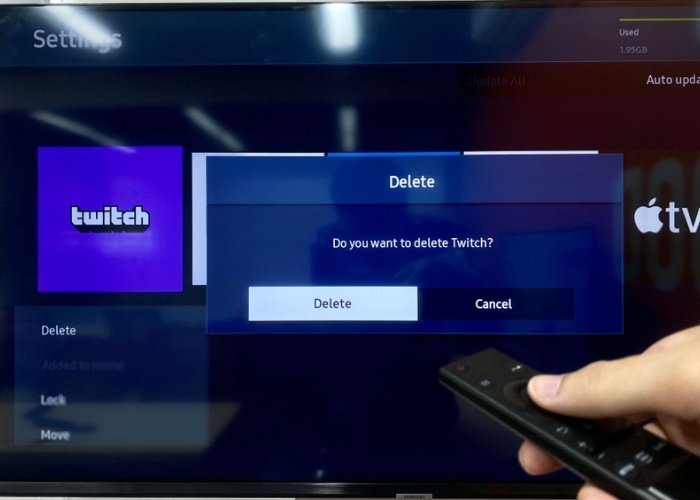
Deleting smart TV apps is pretty straightforward, irrespective of the TV or its OS.
Just navigate to the particular app in your TV’s “apps” section. Long-press the remote button that helps evoke the possible course of action. Select “uninstall” or “delete” and press the OK button.
Here is a video demonstrating how to delete, remove (from the home screen), or move the app on a Samsung TV:
The method to delete an app on a non-Samsung TV shouldn’t be very different. If you have doubts, refer to the TV’s user manual.
While at it, find out if your TV has a pending software update. Running the latest software can address performance concerns, including the bootup lag.
Also, eliminate bloatware if possible. If you use an Android TV, there could be some preinstalled Google apps that you would likely not use.
Deleting those applications shall help speed up the device.
3. Power Supply Board Issue
Multiple power-related concerns could arise when your TV power supply board’s electrolytic capacitors start to wear out. The possible outcomes are the TV not turning on, turning off randomly, or taking too long to power on.

Since this is a hardware problem, there’s no way you can rectify this through software. You’ll have to dig into the TV and replace the capacitors.
If you’re not confident doing that yourself, get an expert. At times, replacing the capacitors may not be feasible, or replacing the board with a new board will be the only solution.
Here’s a video showing how you can take apart your TV and replace the capacitors:
Note that since the TV showcased in the video is relatively old, the disassembly methods may be too ancient for your modern smart TV.
4. Your TV Just Needs More Time
Some TVs take a bit more time to power on than others, especially if they’re several years old.
The situation is similar to how laptops with SSDs (solid-state drives) boot up quickly compared to those fitted with spinning hard disks.
Some computers let you replace HDD (hard disk drive) with an SSD. Some do not. With TVs, however, there’s no such provision. A television’s storage drive and other components are not easily accessible, especially in the sleeker, more modern TVs.
In such a case, you can upgrade to a newer, snappier TV. Some TVs, however, let you speed up the bootup process through software.
LG TVs, for example, have the “Quick Start+” mode to help speed up bootup time. To enable the feature, do the following:
1. Press your LG TV remote’s Settings button.
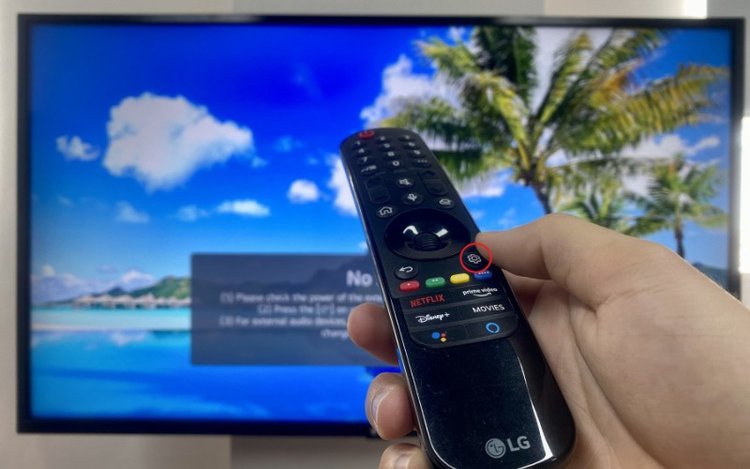
2. Choose All Settings > General > Devices > TV Management.
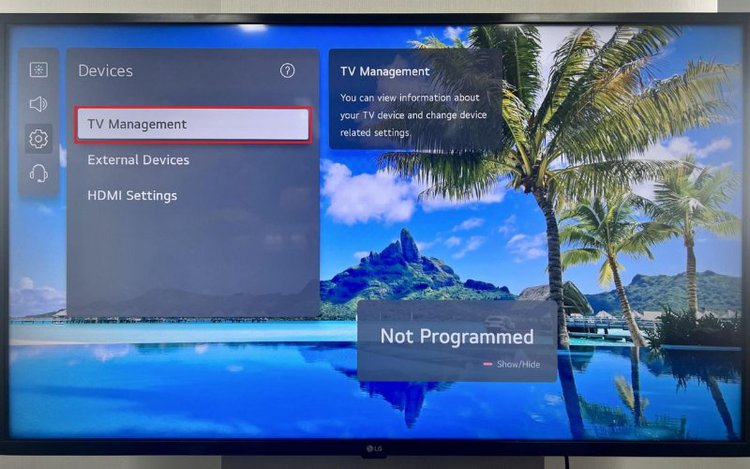
3. Navigate to Quick Start+ and toggle on the feature.
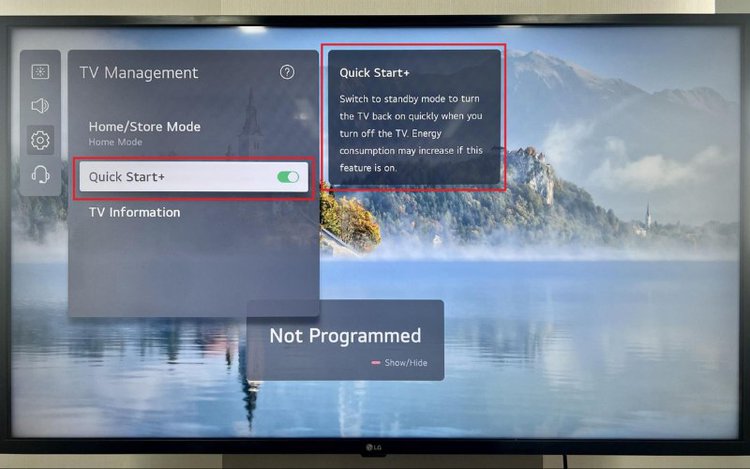
Some TCL TVs also have this feature. To enable the option on your TCL TV, follow these steps (for TCL Google TVs):
1. Press the Settings key on your TCL TV remote control and select the Settings menu.
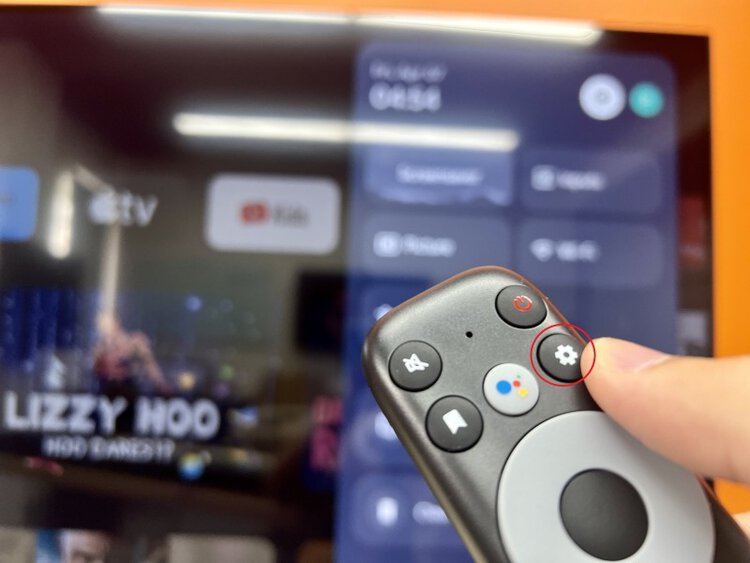
2. Select System.
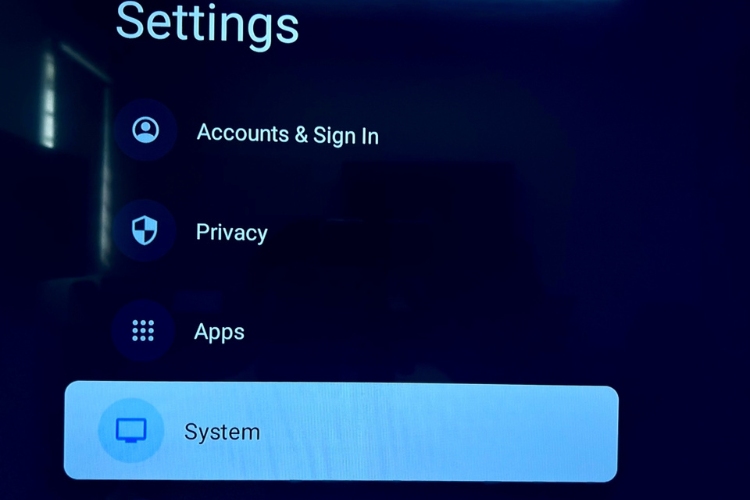
3. Head to Power & Energy.
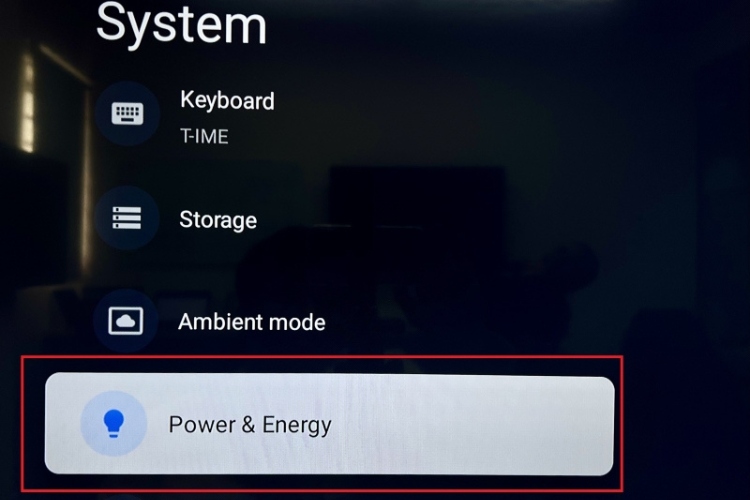
4. Select Quick Start and toggle it ON.
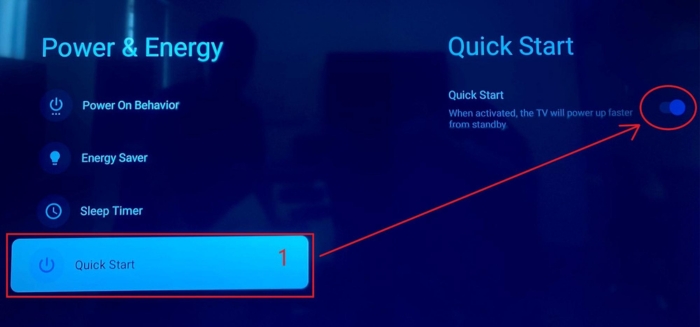
For TCL Android TVs, you can watch the video below for a demonstration:
Do note some users have complained the speed-up mode causes app crashes or slowdowns in performance. Therefore, enable the feature at your discretion.
FAQs
How Long Does It Usually Take for a TV to Turn On?
Generally, a modern smart TV should take five to 10 seconds to wake up. Some TVs could take longer, but almost no TV powers on entirely within five seconds.
If your TV takes a minute or two, the TV may be burdened with apps and files. Lightening that load could help cut down the time. If it takes several minutes, there’s likely some hardware issue.
Some users have also complained their TV took hours to power on. But those are sporadic occurrences and happen if there’s something seriously wrong with the television, such as a power supply problem.
Conclusion
A smart TV taking longer than usual to power itself on is not a frequent or significant concern. But don’t overlook it if there’s one. Luckily, there are discernible causes and solutions to the issue.
Note that the above fixes will help speed up your TV in general. The TV turning on quickly after being powered up is one of the many outcomes of that performance boost.
Quick Start+, however, has a direct connection to TV bootup time. If you use an LG or TCL TV that has the option, use it.
But also be wary of the performance concerns that may arise, as stated above.
Catherine Tramell has been covering technology as a freelance writer for over a decade. She has been writing for Pointer Clicker for over a year, further expanding her expertise as a tech columnist. Catherine likes spending time with her family and friends and her pastimes are reading books and news articles.


I feel like never turning it off, because afraid it will never turn itself on again. Seems like it takes longer ever time? But that runs up the power bill…………..? I deleted all the applications except the ones Samsung recommended keeping..